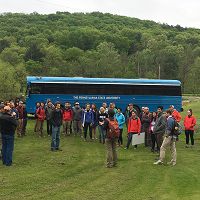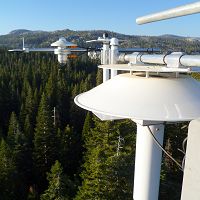MODELS
Models play a key role in advancing our understanding of how the Critical Zone forms, operates, and evolves. CZOs provide an important opportunity to improve various models by using integrated measurements to parameterize, test and develop new representations of CZO processes. The CZOs seek to extend and improve process specific models, such as the response of vegetation to water stress, as well as fully coupled models of atmospheric-hydrologic-ecologic and geomorphic processes. Comprehensive data sets from the CZOs provide a unique opportunity to evaluate models at different temporal and spatial scales and across a range of environmental settings. Models also provide a mechanism to generalize and extend observation-based results beyond the CZOs. CZO models will allow the prediction of the Critical Zone response to future climate and land use changes.The CZO modeling strategy can be generally categorized by two approaches: conceptual and numerical models.
Modelling News

FEATURED
CZ colleagues: Please contact us about proposals for NSF’s CZ Collaborative Network, due 02 Dec 2019
08 Jul 2019 (National, Boulder, Calhoun, Catalina-Jemez, Christina, Eel, IML, Luquillo, Reynolds, Shale Hills, Sierra) - CZO will end Nov 2020, succeeded by the “CZ Collaborative Network”. Let’s explore how the CZ community can build upon the CZOs via new NSF proposals.

2019 SSHCZO All-Hands Meeting at Penn State
10 May 2019 (Shale Hills) - The 2019 All-Hands Meeting brought together our core team, our off-campus collaborators, and our outreach partners at Shaver's Creek in a new...

2018 American Geophysical Union Fall Meeting - What Science Stands For
14 Nov 2018 (Shale Hills) - The Annual Fall Meeting of the American Geophysical Union is a worldwide conference for geophysical sciences, which brings together space scietists,...
Multiple postdoc and grad student opportunities at UC Merced
12 Sep 2018 (Sierra) - Two postdoctoral scholar positions and multiple MS or PhD research assistantships are currently available at the University of California, Merced....

Research Program Update: September 2018
07 Sep 2018 (Sierra) - Recent activities and findings, funding opportunities, upcoming events, and other updates
Explore Further
